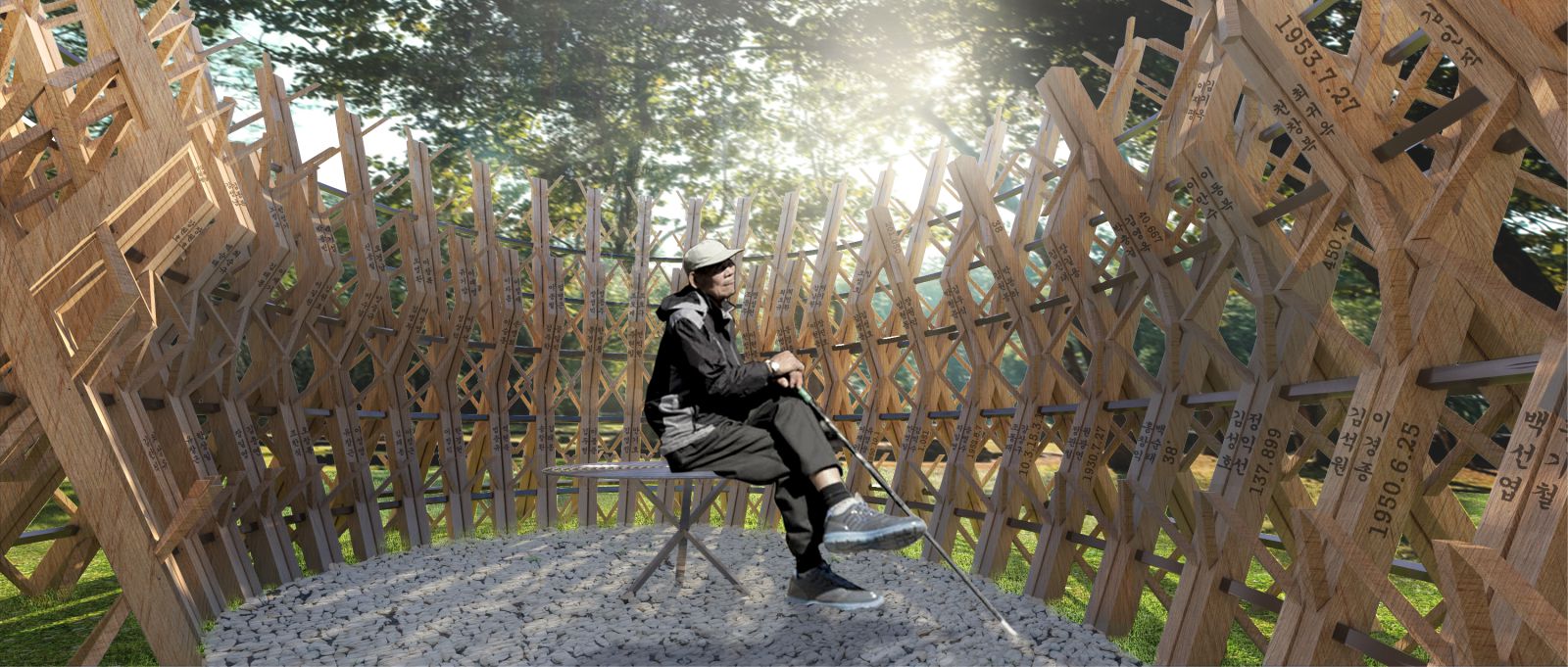The tragedy of the nation has begun on June 25th of 1950. Although the war has ended a long time ago, the consequence continued along, such as PTSD(Post Traumatic Stress Disorder) from the loss of friends, the segregation of family members and the death of fellow soldiers. Sadly, Korean government working on military benefit is very minimal in comparison to the United States. Majority of the veterans are still suffering the hardship physically, mentally and economically.
Our significant design intent is to address the situation of unremarkable veteran status in Korea society so that their struggles and sacrifices would not be forgotten in society. The shelter is dedicated to the survivors of the war and veteran’s family. The shelter is where past, present, and future exist simultaneously. The timeline of the war and veteran’s names are engraved on the modules. As users walk through the space, they will find their memories and their time spent in Korean War when they see their names or fellow fallen soldier’s names.
At the moment, the text becomes the object that link to the past and the present. Veterans will feel a recognition of enduring their sacrifices as veteran. The user’s participation will allow a direct and intimate dialogue with the shelter, creating a personal-private conversation. Most of the veterans are suffering the hardship physically, mentally and economically. According to the TV-Chosun articles, about 150,000 veterans are currently alive and Korean government only supports service allowance of KRW 130,000 (around $100 USD) a month which leaves 87 percent of war veterans to be low incomes.
In addition average of income for these veterans are only 400 USD a month which is only half of the minimum cost to live in Korea. In 2019, veterans’ average age is 87. The design intent is inspired from the pattern of Taegeuk, in the Korean Flag. In general, blue refers to hope, ying, south, right while red refers to honor, yang, north, left. The Taegeuk symbolizes that the yin (blue) and yang (red) becomes the balance of nature and coexisting to advancement. As a design perspective, reinterpretation of this flag is related to two different spatial qualities. Blue is determined as an architecture, a space of hope for veterans.
Red indicates as philosophy of space which is related to the soul’s experience. The pavilion will be in Backbum Square Park (Seoul, South Korea) where is close to Yongsan Garrison, the headquarters for U.S military forces. For the tectonic matters, the module is inspired from the wood military barricade used during the war. The modular is easily buildable, using different types of joinery. The bottom of the module will be attached to the steel post with concrete footing. This module is comprised of tenon and mortise woodworking joints, also having four diagonal timber connectors nestled into the center block angled at 45 degrees.
There are two horizontal galvanized steel tubes attach on two intersecting area of wood modular which are connecting structures to support each module. The two layers of modulars will be constructed; 2m height modular tilted inward and 2.7 m height modular tilted outward. This shelter design is represented the beauty of modular architecture that use the strategies of outside-in and inside-out for both soul and physical matters. Source and image courtesy by Jaehong Chung / Chanon Wangkachonkait / Hyunji Kim










Hi! Aw, this was a really nice post. In idea I would like to put in writing like this additionally – taking time and actual effort to make a very good article but what can I say I procrastinate alot and by no means seem to get something done.